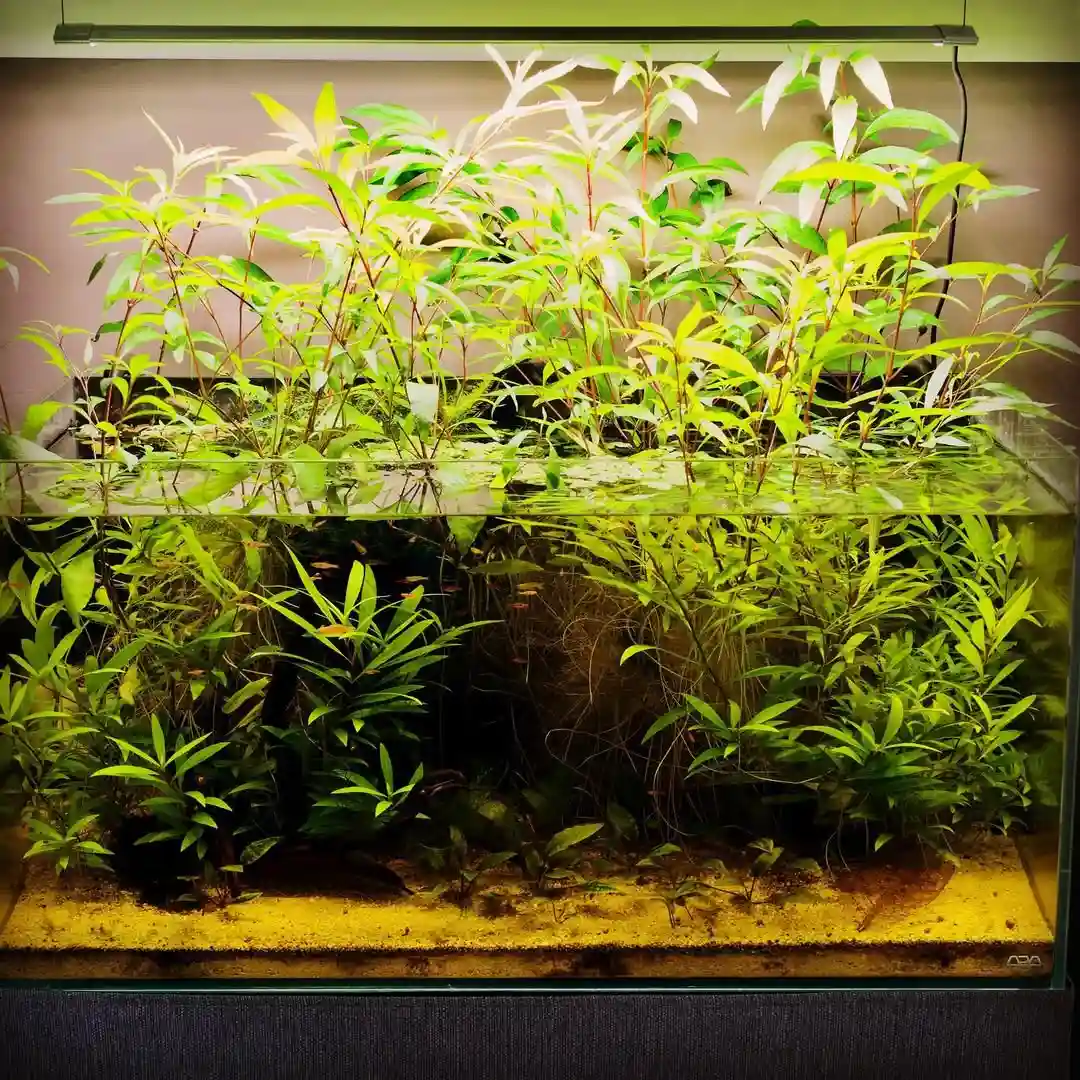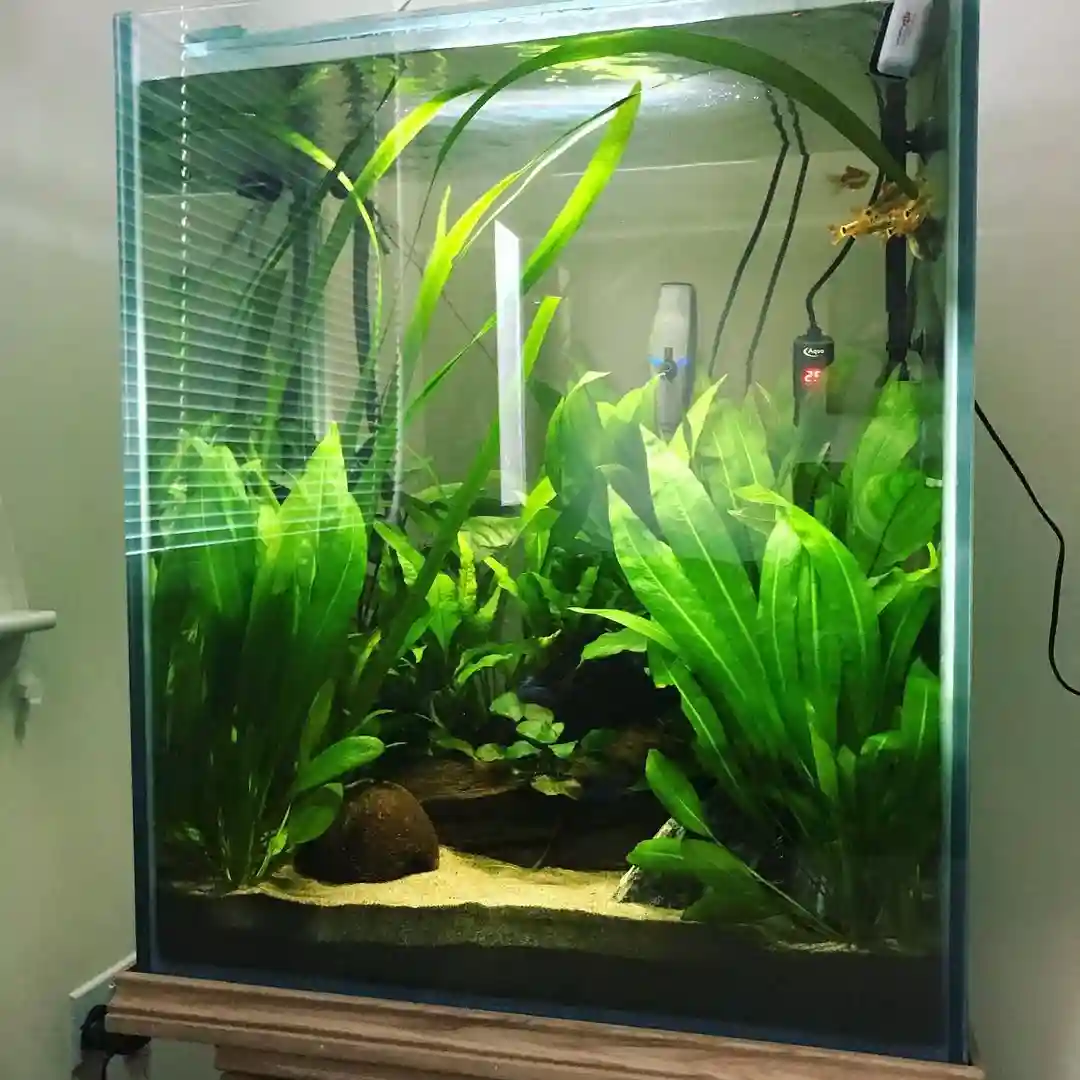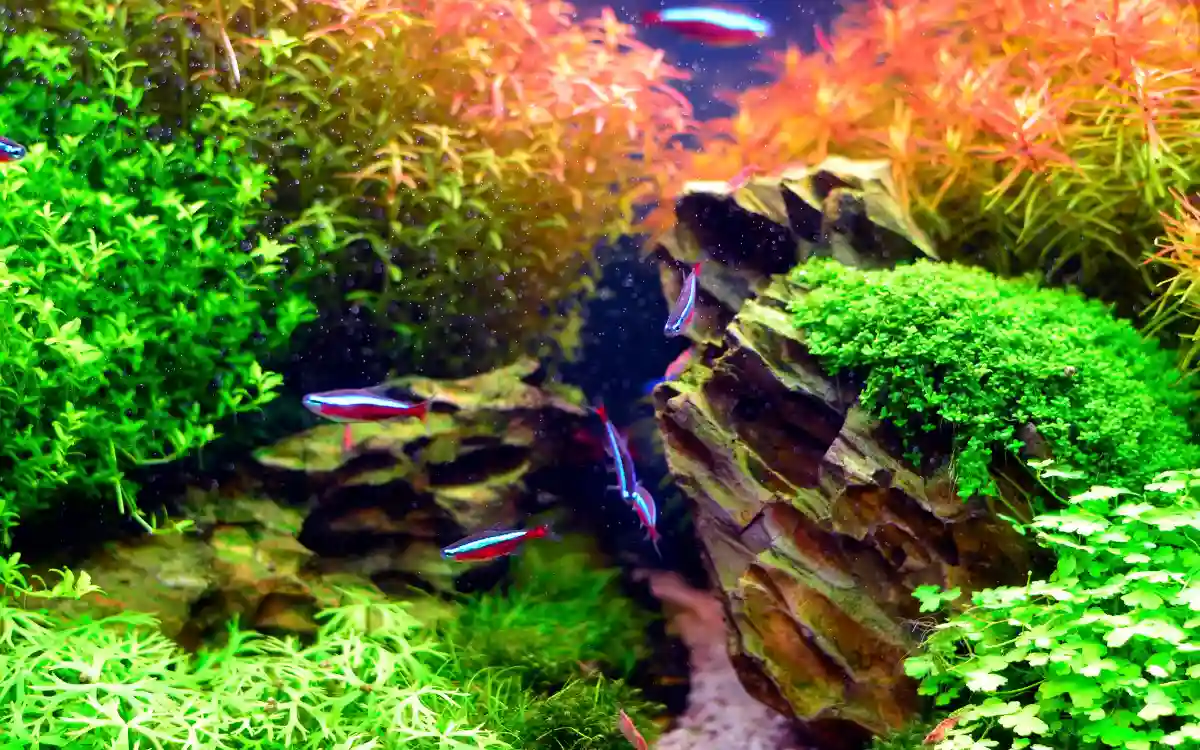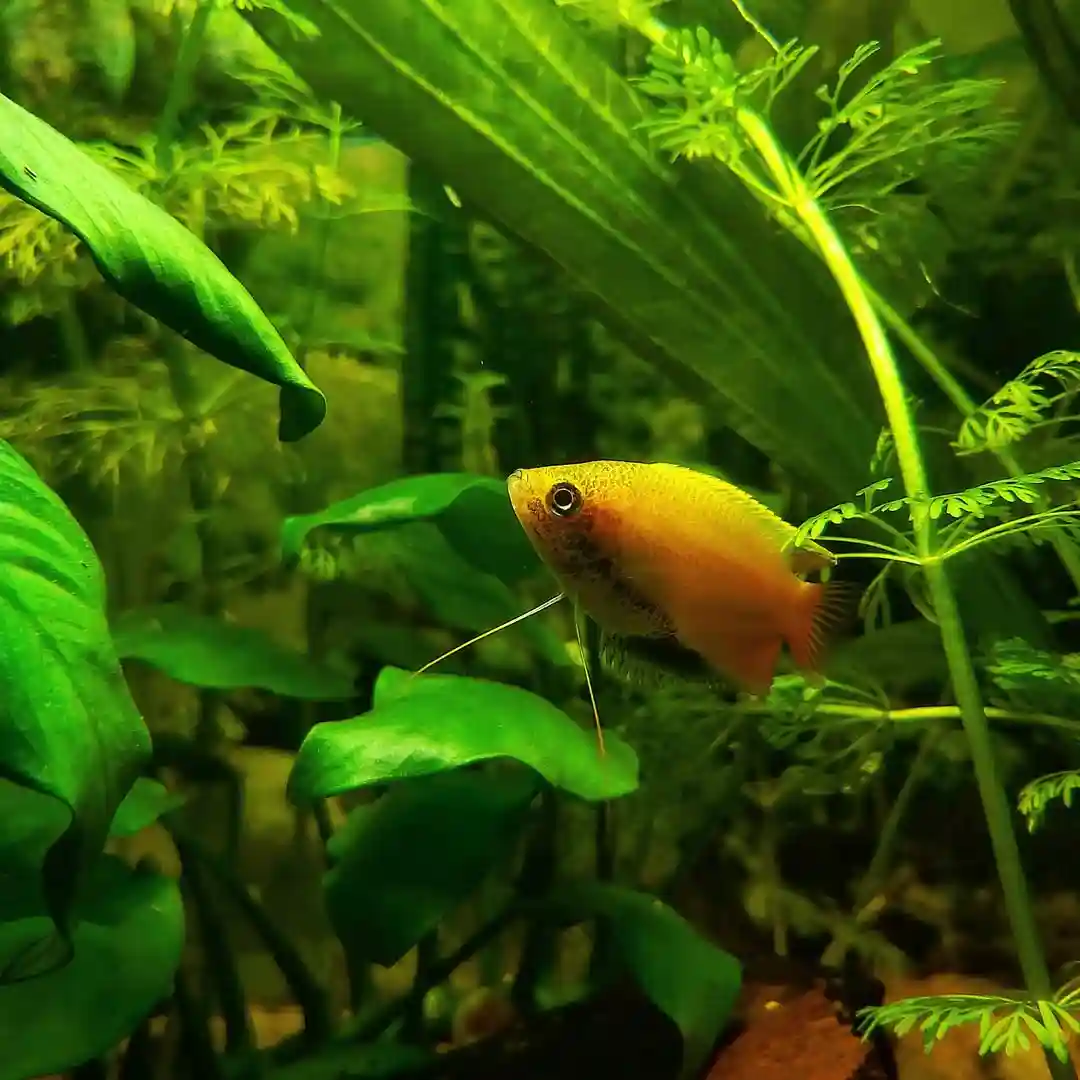10 Best Foreground Aquarium Plants for Carpets & Aquascapes
Foreground aquarium plants are short plants that grow at the front of the tank. They help create depth, add texture, and make your aquarium look more natural. These plants often form carpets or small bushes that give shelter to fish and shrimp. Popular choices like Dwarf Hairgrass, Monte Carlo, and Marsilea Hirsuta work well for both beginners and experienced aquascapers.
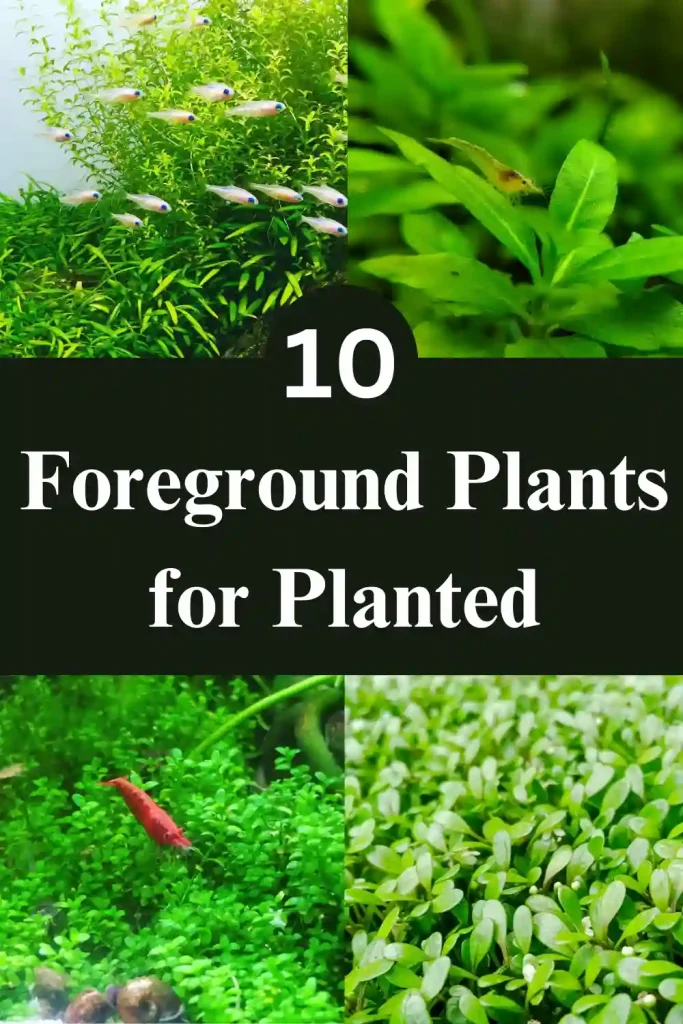
List of 10 Best Foreground Plants for Planted Aquariums
1. Dwarf Hairgrass (Eleocharis acicularis)
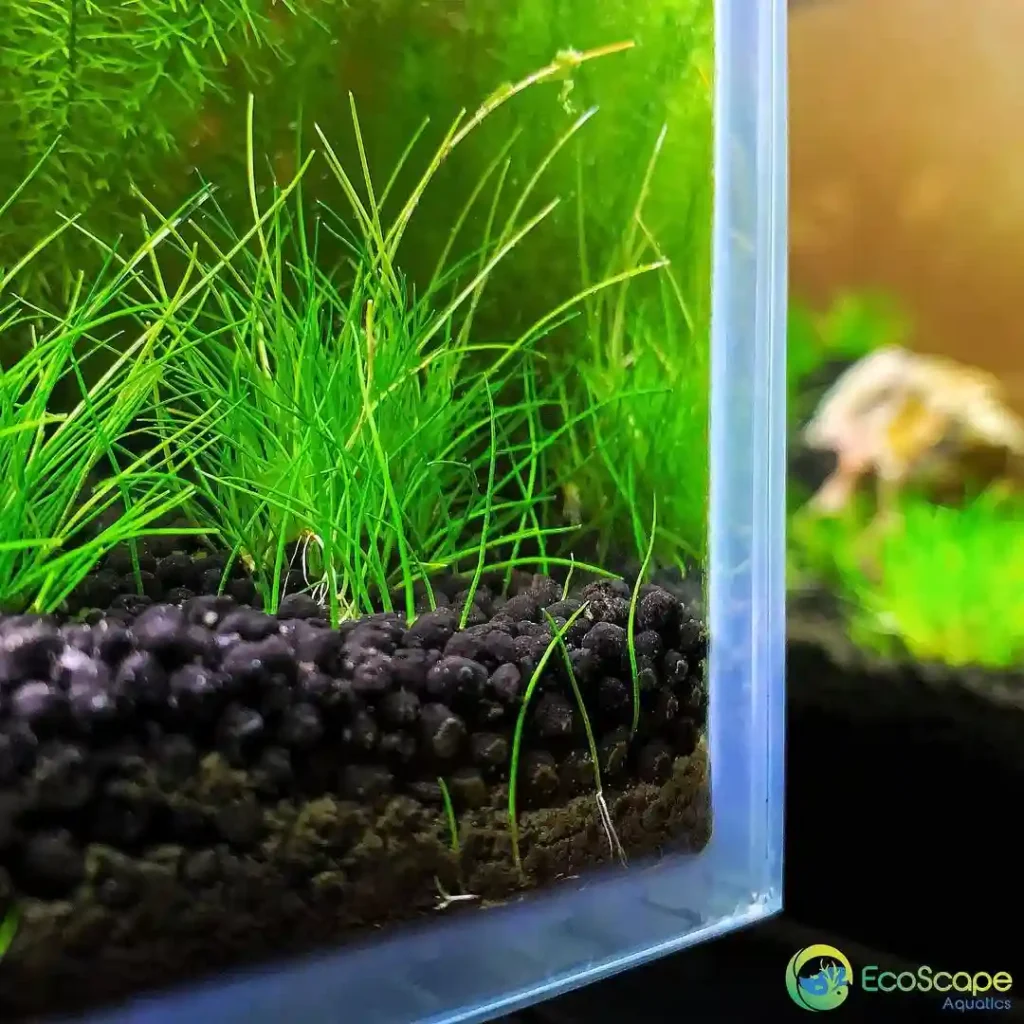
Dwarf Hairgrass is a popular foreground aquarium plant known for creating a soft, lawn-like carpet that mimics underwater meadows. Its thin, grass-like blades grow quickly in ideal conditions, making it a favorite for aquascapers aiming for a natural look. This plant thrives in medium to high light setups and spreads by runners to form dense carpets.
- Light: Medium to high
- CO₂: Recommended for best results
- Difficulty: Moderate
- Growth Rate: Fast with good conditions
- Best Use: Nature-style and iwagumi aquascapes where it contrasts beautifully with rocks and hardscape
👉 Tip: Plant small clumps spaced about 1 inch apart to encourage horizontal spreading. Regular trimming keeps growth horizontal rather than vertical, creating an even carpet.
2. Monte Carlo (Micranthemum tweediei)

Monte Carlo is a beginner-friendly carpeting plant with small, round leaves that create a dense, bright green foreground. It’s a popular alternative to more demanding plants like Dwarf Baby Tears, as it’s easier to grow and less dependent on CO₂.
- Light: Medium
- CO₂: Optional (helps speed up growth and density)
- Difficulty: Easy to moderate
- Growth Rate: Moderate
- Best Use: Low- to mid-energy tanks where aquarists want an attractive carpet without intensive care
👉 Tip: Plant small clumps in a grid and press them firmly into the substrate. Regular trimming prevents the bottom layers from suffocating under thick growth.
3. Marsilea Hirsuta (Mini Clover)
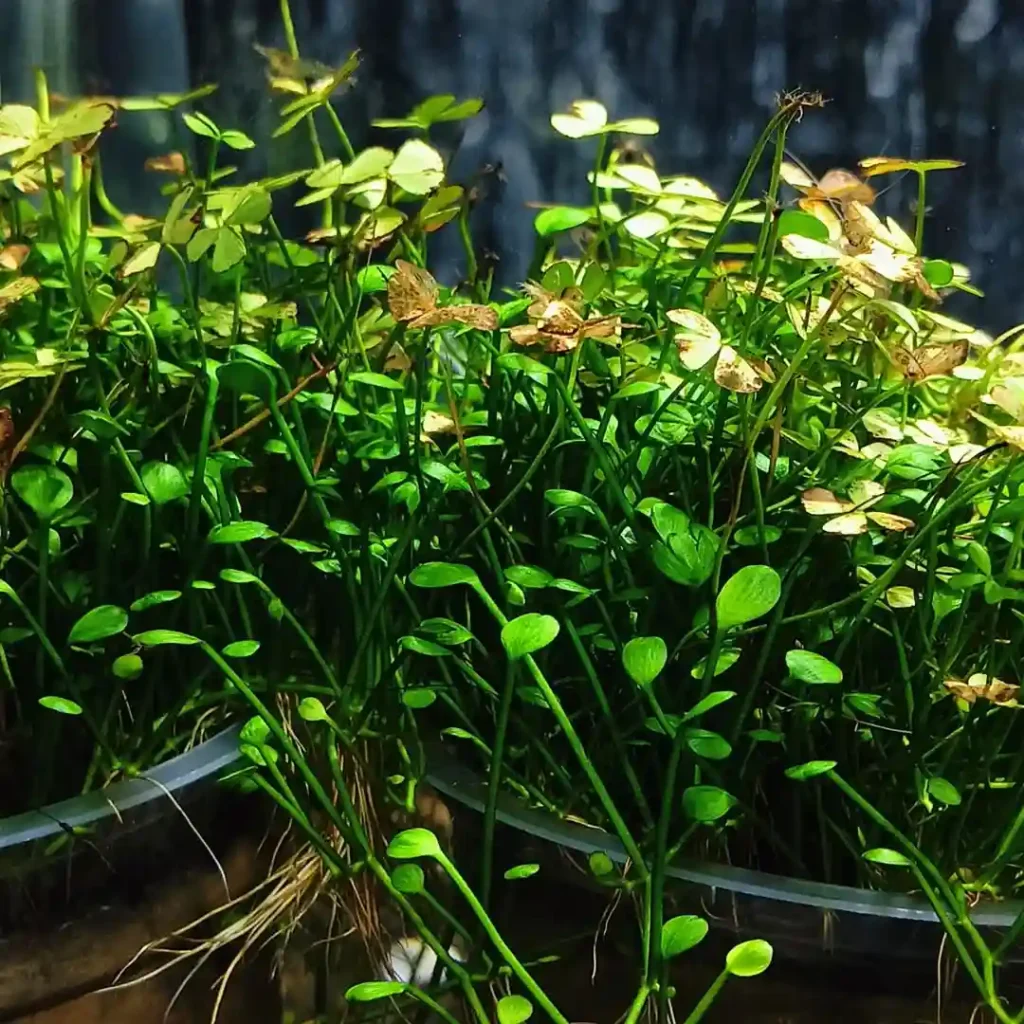
Marsilea Hirsuta, often called Mini Clover, forms a charming, low-growing carpet with clover-shaped leaves. It’s highly adaptable and well-suited for low-tech tanks, although it grows faster with better lighting.
- Light: Low to medium
- CO₂: Not required
- Difficulty: Easy
- Growth Rate: Slow at first, faster once established
- Best Use: Low-tech or beginner aquascapes where patience is rewarded
👉 Tip: Be patient — Marsilea starts slow, but once settled, it spreads steadily. Enhanced lighting speeds up the process.
4. Staurogyne Repens

Staurogyne Repens is a versatile foreground or low midground plant that forms dense, bright green patches. With regular trimming, it can stay low as a bushy foreground plant or serve as a transition plant.
- Light: Medium
- CO₂: Beneficial but not essential
- Difficulty: Easy to moderate
- Growth Rate: Moderate
- Best Use: Foreground to midground transition in nature aquascapes
👉 Tip: Plant stems 1 inch apart. Trimming the tops encourages side shoots and a fuller, more compact look.
Related article: 12 Fast Growing Aquatic Plants
5. Dwarf Baby Tears (Hemianthus callitrichoides ‘Cuba’)
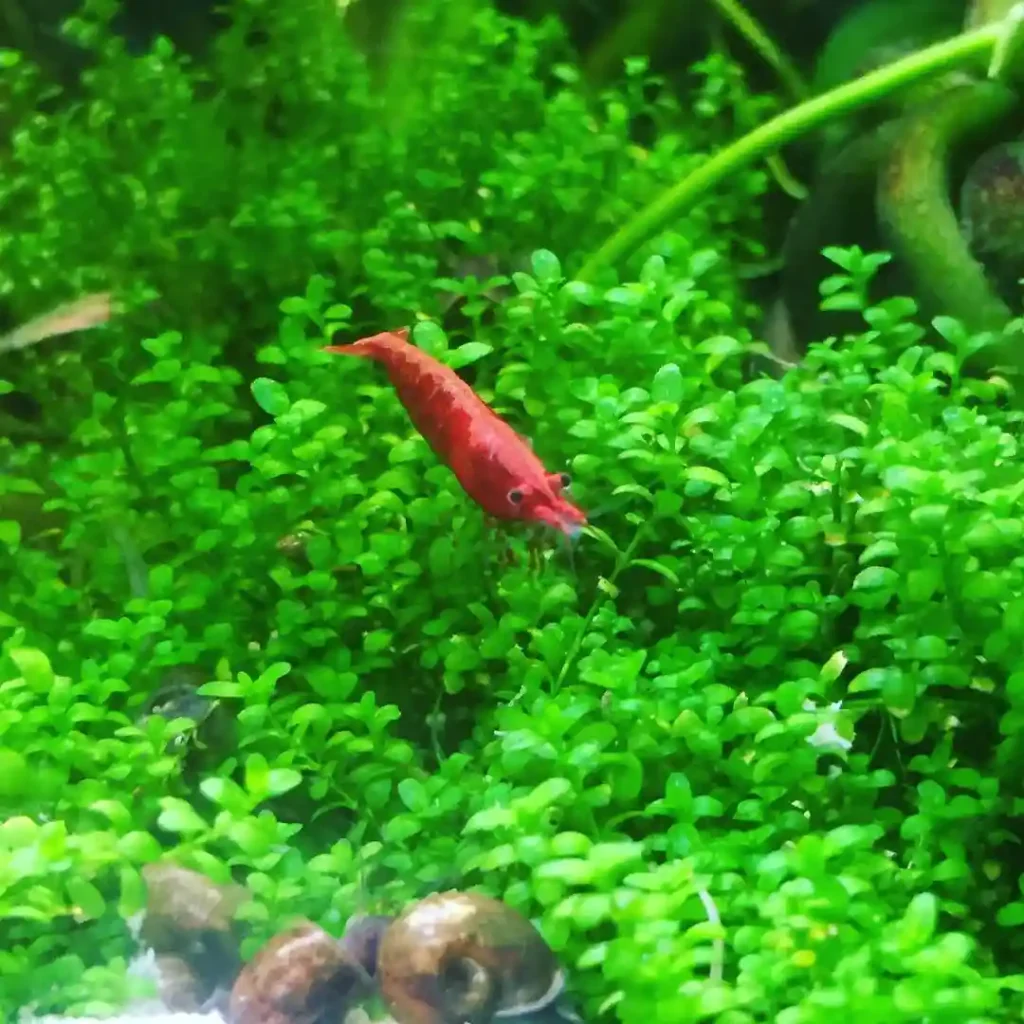
Dwarf Baby Tears, also known as HC Cuba, is prized for its delicate appearance and ability to create the most lush, manicured carpets. It’s one of the most demanding carpet plants, needing stable CO₂ and high light to thrive.
- Light: High
- CO₂: Required
- Difficulty: Advanced
- Growth Rate: Fast under optimal conditions
- Best Use: High-tech, high-light tanks designed for precision aquascaping
👉 Tip: Plant tiny clumps and keep lighting intense with stable CO₂. Trimming prevents the bottom layers from dying.
6. Glossostigma elatinoides
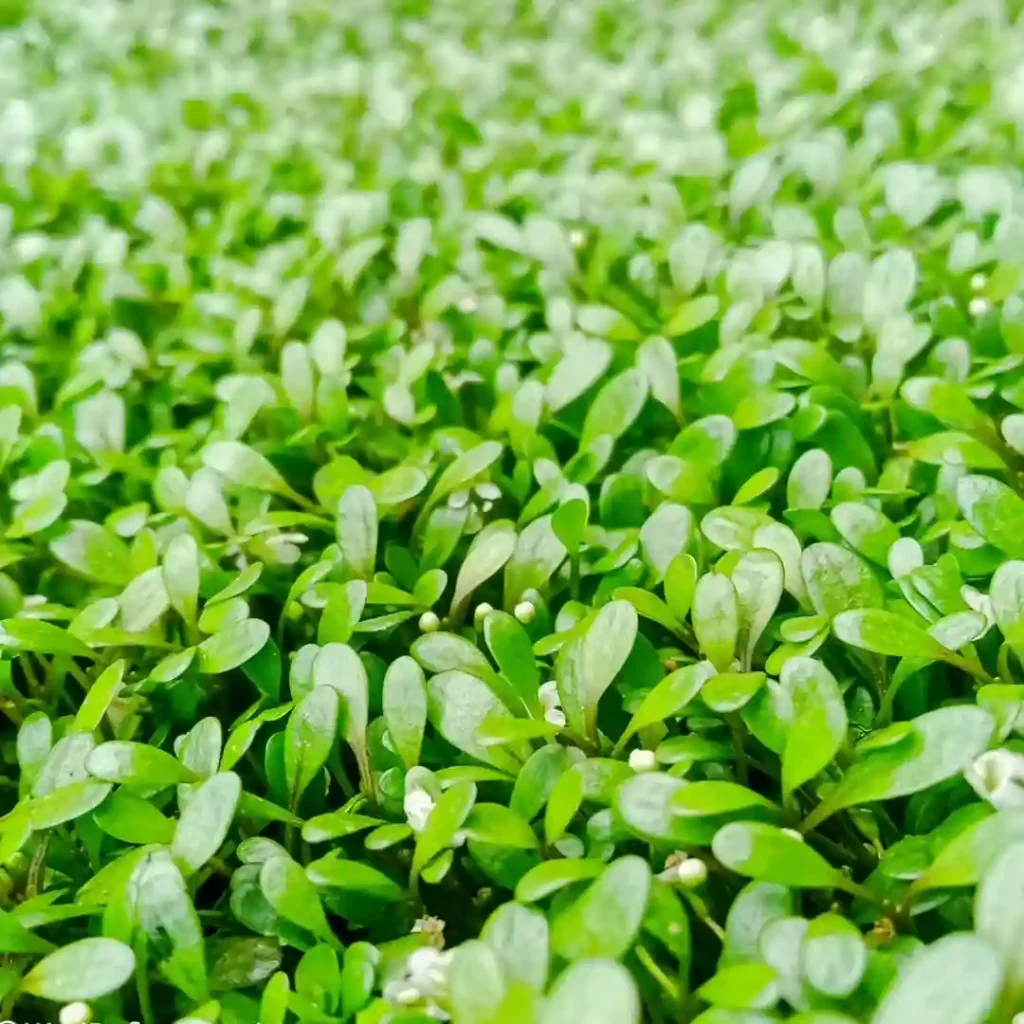
Glossostigma is a low-growing plant with small, round leaves that form a tight, elegant carpet. It needs plenty of light to avoid vertical growth and to spread properly.
- Light: High
- CO₂: Strongly recommended
- Difficulty: Moderate to advanced
- Growth Rate: Fast in high-tech setups
- Best Use: Creating scale and visual depth in aquascapes
👉 Tip: Plant tiny portions spaced out to encourage horizontal spreading. Trim regularly to keep carpets low.
7. Micro Sword (Lilaeopsis brasiliensis)
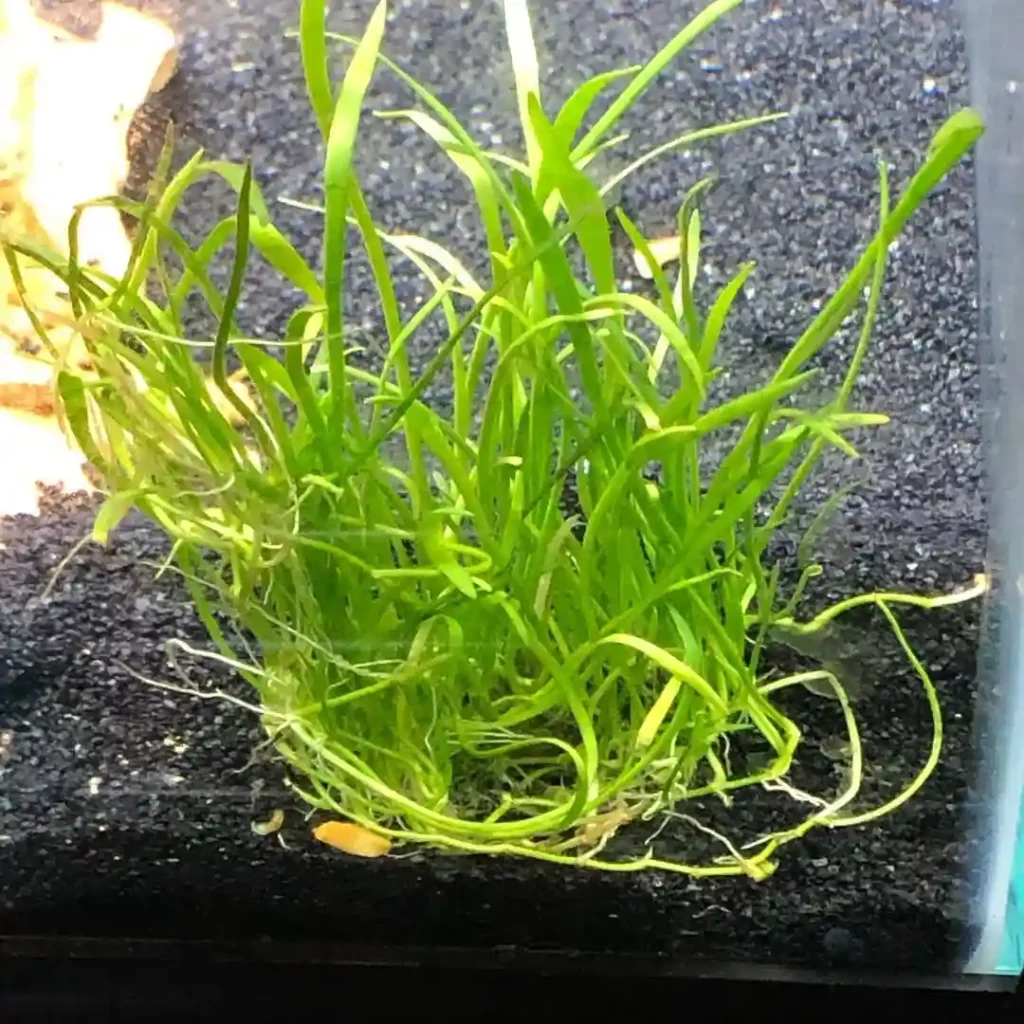
Micro Sword produces narrow, grass-like blades that form a slightly taller foreground cover. It provides texture contrast and works well as a transition plant.
- Light: Medium to high
- CO₂: Beneficial
- Difficulty: Moderate
- Growth Rate: Slow to moderate
- Best Use: Foreground edging or transitioning between carpet and midground
👉 Tip: Plant small clumps and provide stable conditions for better spread.
8. Cryptocoryne parva
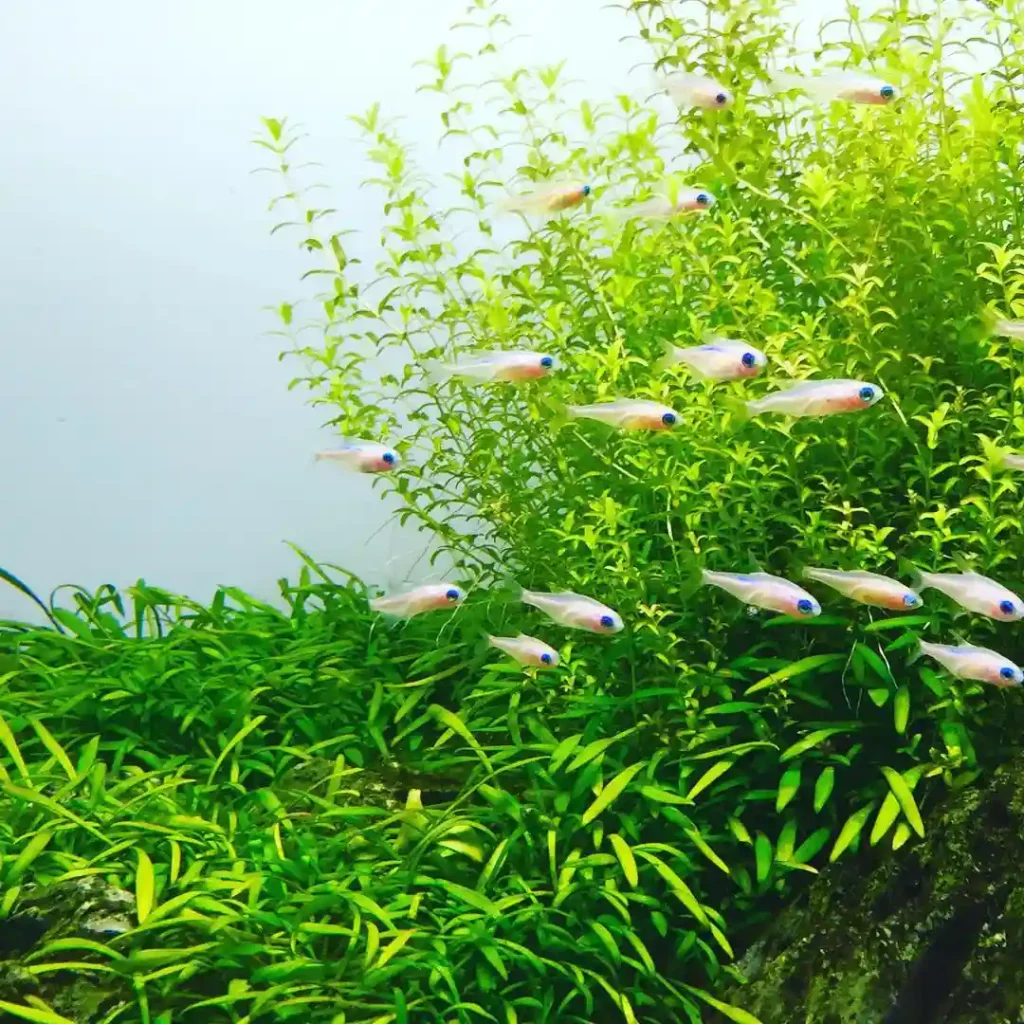
Cryptocoryne parva is the smallest of the Crypt family and grows very slowly, making it ideal for low-tech tanks where maintenance needs to be minimal.
- Light: Low to medium
- CO₂: Not required
- Difficulty: Easy
- Growth Rate: Very slow
- Best Use: Foreground in long-term, low-maintenance tanks
👉 Tip: Patience is key. Use root tabs to help support healthy growth.
9. Anubias nana ‘Petite’
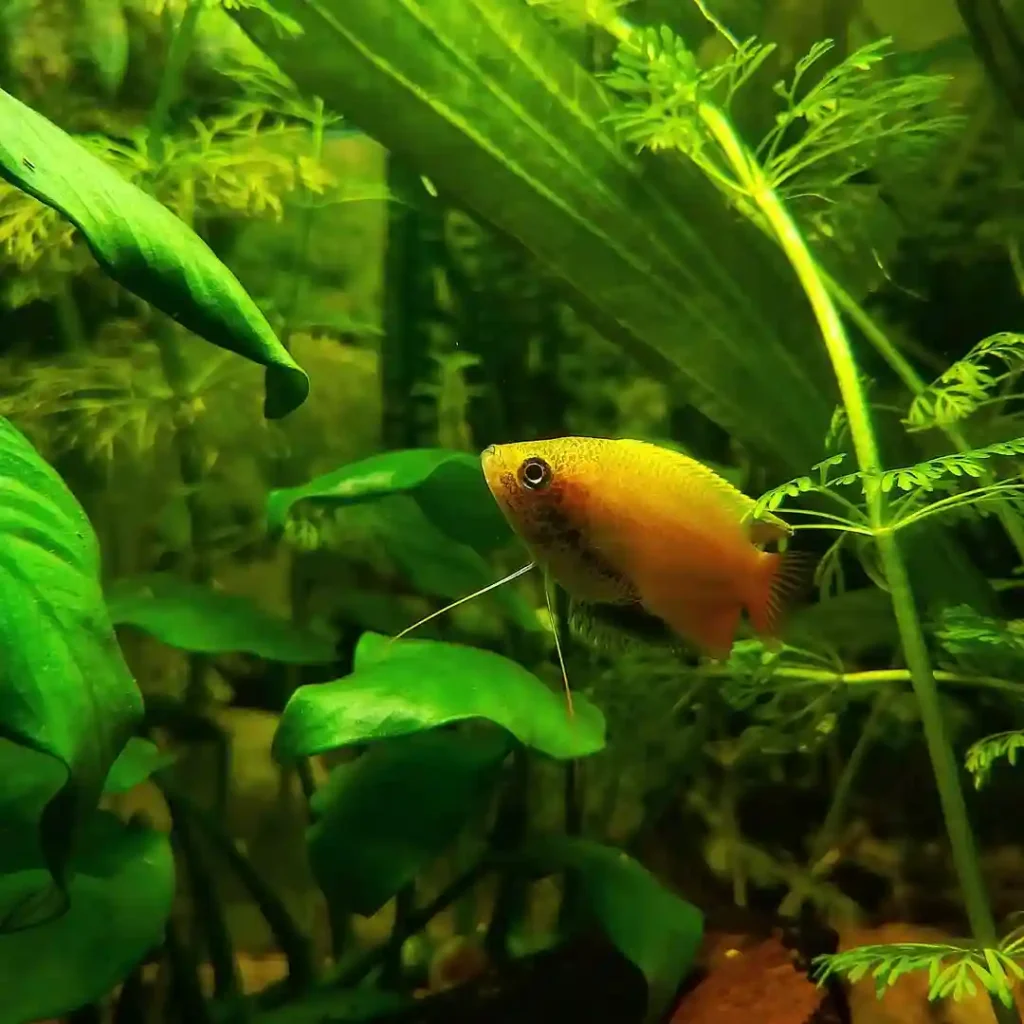
Anubias nana ‘Petite’ is a tiny version of Anubias that works well on rocks or driftwood in the foreground. While not a true carpeting plant, it adds interest and depth without needing to be planted in the substrate.
- Light: Low to medium
- CO₂: Not required
- Difficulty: Very easy
- Growth Rate: Slow
- Best Use: Hardscape accent for shaded areas or tanks with fish that dig
👉 Tip: Attach to hardscape; never bury the rhizome, or it may rot.
10. Hygrophila ‘Araguaia’

Hygrophila ‘Araguaia’ offers a splash of reddish color to the foreground, creating contrast against green carpets. It’s relatively new to the hobby and responds well to trimming and higher light.
- Light: Medium to high
- CO₂: Beneficial
- Difficulty: Moderate
- Growth Rate: Moderate
- Best Use: Color contrast in nature-style aquascapes
👉 Tip: Trim often to maintain compact growth and intensify red coloration.
FAQ’S
What are the easiest foreground plants for aquariums?
Monte Carlo, Marsilea Hirsuta, and Cryptocoryne parva are easy foreground plants that work well in beginner or low-tech setups.
Do all foreground plants need CO₂?
No. Some foreground plants like Java Moss, Cryptocoryne parva, and Marsilea Hirsuta grow well without CO₂, but others like Dwarf Baby Tears require it.
How fast do foreground plants grow?
Growth speed depends on the species. Dwarf Hairgrass and Glossostigma grow fast under high light and CO₂, while Marsilea and Cryptocoryne parva grow slowly.
Can I grow carpet plants in low light?
Yes, but choose low-light options like Java Moss, Marsilea Hirsuta, or Cryptocoryne parva. High-light carpet plants won’t thrive without proper lighting.
What’s the difference between foreground plants and carpet plants?
Foreground plants are placed at the front of the aquarium and may form low bushes or carpets. Carpet plants specifically spread horizontally to cover the substrate.
How do I stop foreground plants from uprooting?
Plant in small clumps, use tweezers, and press them firmly into the substrate. For tricky species, try a dry start method or cover with mesh temporarily.

